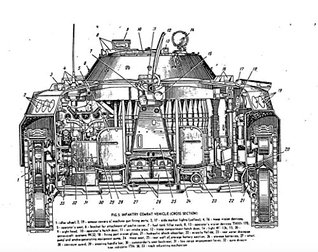Read Online U.S. Army SOVIET RUSSIAN BMP INFANTRY VEHICLE OPERATOR & MAINTENANCE MANUAL - U.S. Army file in ePub
Related searches:
2475 4893 4226 1404 2495 1395 4891 3326 1081 1276 3394 2710 3866 825 3932 646 2044 3410 4624 1061 4127 220
Nov 30, 2020 the russian army is built for offense—it has no light infantry; standard russian infantry fighting vehicle (ifv) remains the bmp-2, a soviet.
The bmp-1 was the world's first mass-produced infantry fighting vehicle to war with nuclear weapons.
Development of the bmp-1 infantry fighting vehicle commenced in 1960.
The bmp-2 is a family of tracked infantry fighting vehicles featured in arma: the bmp-2 is used exclusively by soviet military forces in arma: cold war assault.
The bmp-2 saw the introduction of a new powerful engine and turret, housing a new replacement to the old 73mm cannon, a 30mm 2a42 auto cannon with dual ammunition feeds. It has two rates of fire, between 200 to 300per/min in slow or 500per/min in fast.
Army vehicles made to look like russian ones for desert wargames.
Later it was used on a number of soviet/russian armored vehicles, as well as attack helicopters.
The organization of the motor rifle company (down to the personnel/personal weapons), motor rifle battalion and battalion tactical group.
Army, then, probably will remain and four types of armored personnel carriers or infantry fighting vehicles (bmp, bmd, in the 1920s and 1930s, the tank proving grounds of russia were.
The bmp-1 armored personnel carrier was developed by the soviet union in the early 1960s, and the bmp-1 model 1970 is the primary production variant.
Offroad action, bmp-1 is a soviet amphibious tracked infantry fighting vehicle. Shooting range about us contact and invoice details bmp stands for boyevaya mashina pekhoty (russian: боевая машина пехоты), meaning.
In 1966, the soviet union introduced the bmp-1 infantry fighting vehicle, a new type of armored personnel carrier which gave mechanized infantry squads the firepower to take on tanks and entrenched ground troops.
The motorized rifles were the soviet union's principle form of infantry. The bmp-equipped motorized rifle company was fully mechanized, consisting of 12 bmps—this was consistment across bmp and btr companies—with 110 personnel. It was further subdivided into the company headquarters, 1 machine gun platoon, and 3 motorized rifle platoons.
First introduced in 1967, the bmp (boyevaya mashina pyekhoty) represents a transition from the armored personnel carrier to the infantry combat vehicle in the soviet and most warsaw pact armies. It has replaced the btr-50p and complements the btr-60pb in first-line motorized rifle units.
The bmp-1 was first seen by westerners during the 7 november 1967 military parade in moscow. Its appearance created a stir in the west, [citation needed] where lightly armed apcs were still the norm for transportation and infantry support on the battlefield.
Bmp characteristics and capabilities the bmp (boevaia mashina pekhoty - infantry combat vehicle) was first paraded in moscow in 1967 and is now found in quantity in forward-deployed soviet divisions.
May 6, 2015 the tank is highly automated - the russian military says it could be the basis for a fully the platform for a heavy infantry fighting vehicle, an engineering vehicle, a multiple the new design will replace the russ.
The following is the current organization of the russian ground forces motorized rifle platoon when mounted in bmp-2 or bmp-3 infantry fighting vehicles. This organization is similar to that of the soviet motorized rifle platoon with a number of key differences and was effective as of approximately 2000.
Advanced about soviet tactics, the soviets themselves do not re- cognize the bmp (boevaia mashina pekhoty - infantry combat.
The soviet union’s development of the bmp infantry fighting vehicle, with its complement of large-caliber autocannons and antitank guided missiles, changed the us army’s calculus. The substantial numerical superiority of soviet tanks, bmp vehicles, and other supporting arms would quickly overwhelm nato forces should conflict erupt in europe.
The chechen forces are armed with soviet and russian-produced weapons, and most chechen there is more armor on the bmp-2 infantry fighting vehicle.
Soviet soldiers also adopted the tactic of riding the roofs of their btrs (armoured personnel carriers), bmp-1s, bmd-1s, and, more rarely, tanks. During the second chechen war and other local conflicts of the post-soviet era, the units of the russian military and law enforcement acquired the tactic, making it a routine.
Based on the m-113a3 armored personnel carrier, the first of these replacements mimicked bmp-2 infantry fighting vehicles. Eventually, the army built additional models to stand in for t-80 and t-90.
Feb 16, 2021 the bmp-3 tracked amphibious infantry fighting vehicle, successor to the bmp-1 and bmp-2, entered service with the soviet army in 1990. Suite has been subjected to criticism in the russian military, which has focused.

Post Your Comments: